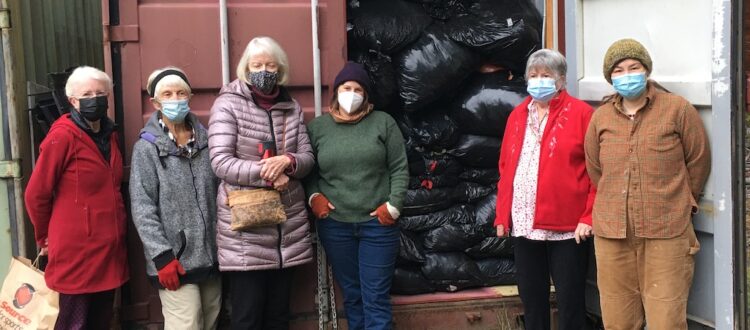GIRO storage of textile waste is at capacity
The textile industry continues to be one of the biggest polluters on the planet. At every stage of this linear economic model, it bumps up against unsustainable practices; from the production of raw resources, manufacturing processes, transportation of goods, and consumer use, to the textile waste that is not being recycled and either landfilled, incinerated, or shipped overseas.
But it is not all doom and gloom. We do see changes starting to happen as more manufacturers are taking responsibility to become more sustainable for each stage from production to consumption to end of life. The area where we see the smallest change in infrastructure is after the consumer has finished with a piece of clothing. What happens to it then?
This is the main driver for the C2C Threads initiative. We want to create a circular model so that clothing and textiles are sustainably managed after they are discarded. Any recycling process requires some quantity of human power and energy to turn materials back into usable goods and our aim is to do that using the least amount of embodied carbon energy. Creating a circular model out of a linear model requires a complete change in infrastructure not just on the ground but in our minds as well. We must literally rethink the life cycle of our clothing.
The GIRO C2C Threads initiative continues to move along slowly but surely towards becoming a reality. By spring 2022 we expect to have a building constructed where the magic of redesigning and recycling the community’s textile waste into durable, useful products will be well underway.
As many of you are now aware we have been stockpiling the islands textile waste into bags and storing it in our sea can where it will sit until we have the building and equipment in place to begin production. Since the pandemic began and Diabetes Clothesline cancelled our collection service, we have accumulated over 40,000 lbs of textile waste and as you can see by the photo, we are at capacity. Rather than suspend donations for clothing we are in the process of increasing our storage space and until we have created that additional space, we are going to need your understanding and cooperation.
Historically islanders dropped off their bags of clothing and then staff and volunteers would empty the bags and sort through the items to determine what is “gently used” and can be placed in the restore for resale. We consider gently used clothing as something you would be happy to give a friend or neighbour because it is clean and has plenty of use left in it. We unfortunately see a lot of clothing that is NOT gently used and is also dirty and often with an unpleasant smell. Our only option for these items is to landfill them. If you are bringing any clothing donations we require that the items be clean. We are slowing down the receiving process by going through your donations with you so that we can determine whether they can be sold as is or stored for the C2C Threads upcycling project. Please understand that it is not our intention to offend you if we send you home with some of your items. We have to be selective due to storage limitations and to raise awareness about which items we cannot process.
We will accept the following CLEAN clothing and textiles (which will be stored for C2C Threads):
- Damaged (broken zipper, buttons missing, torn)
- Pilled
- Out of season
- Stained
- Stretched out
We will not accept the following:
- Soiled clothing or footwear
- Panties, briefs, boxers
Please be respectful to our staff and volunteers when you are dropping off any donations. It is their responsibility to inform you of what is an acceptable donation.
Please limit your drop offs to one bag per person.
If you have a larger number of textiles that you are trying to donate, then please consider donating to other non-profit thrift stores in the district. Alternatively, hold on to your textiles until next spring when we anticipate that we will be operational in the new building.
We understand these changes may be an inconvenience and a change from the usual drop off procedure however it brings to light that textile waste is an issue in every community and it is our individual responsibility to take steps to rethink and reduce our clothing consumption as only then are we taking real steps to support changing the system to a more sustainable one.
Thank you for your continuing support for GIRO and the C2C Threads initiative.

